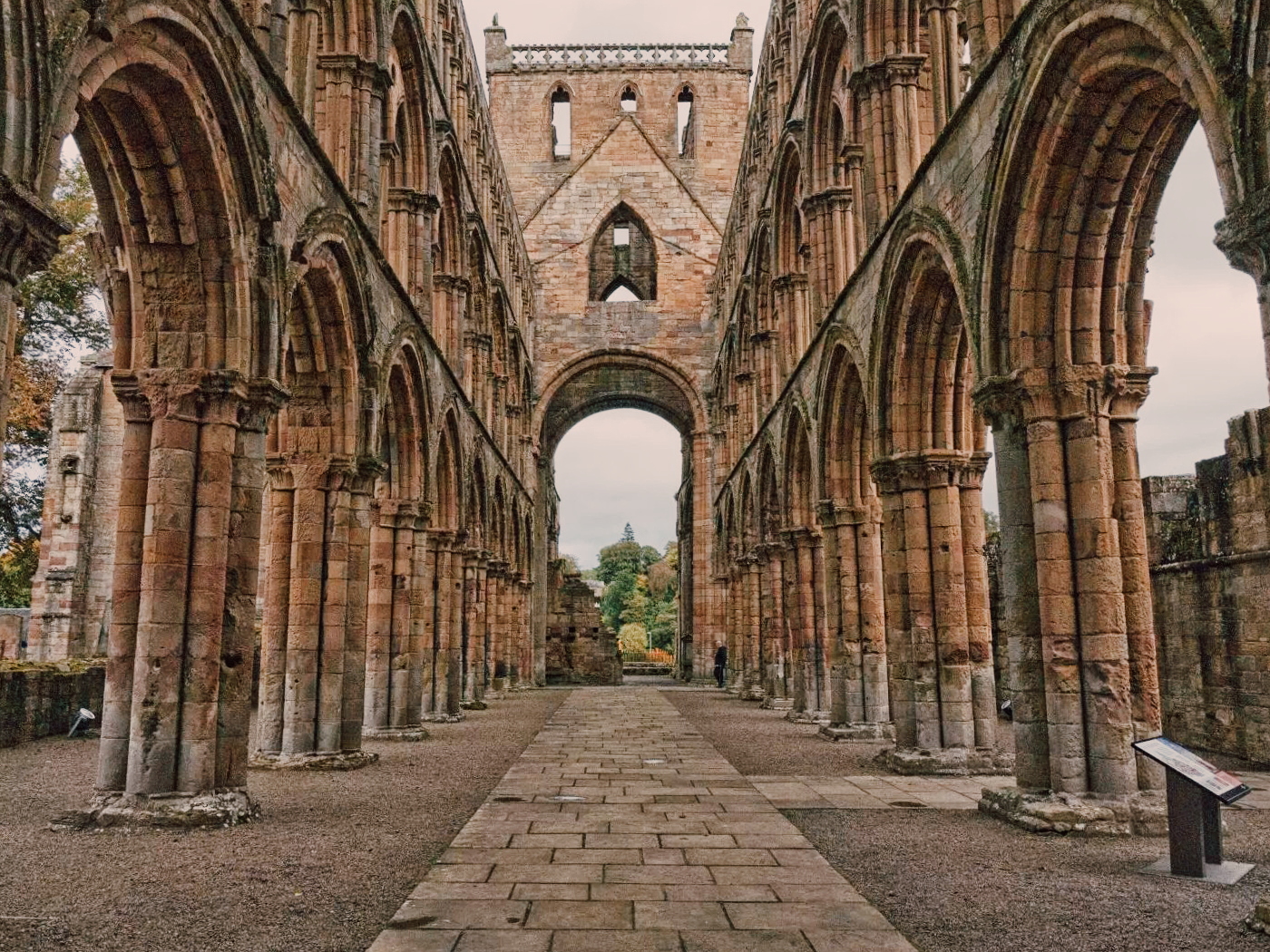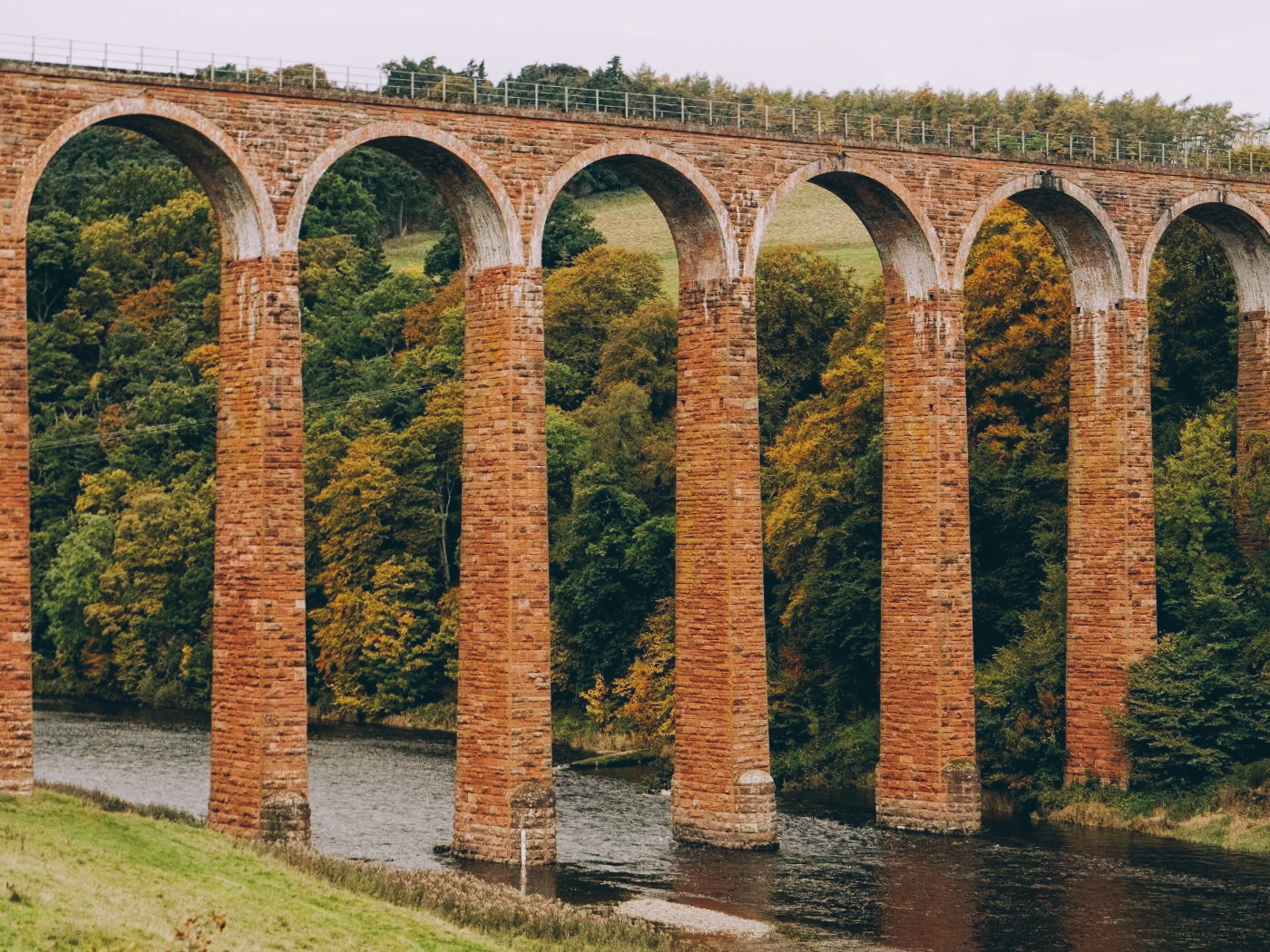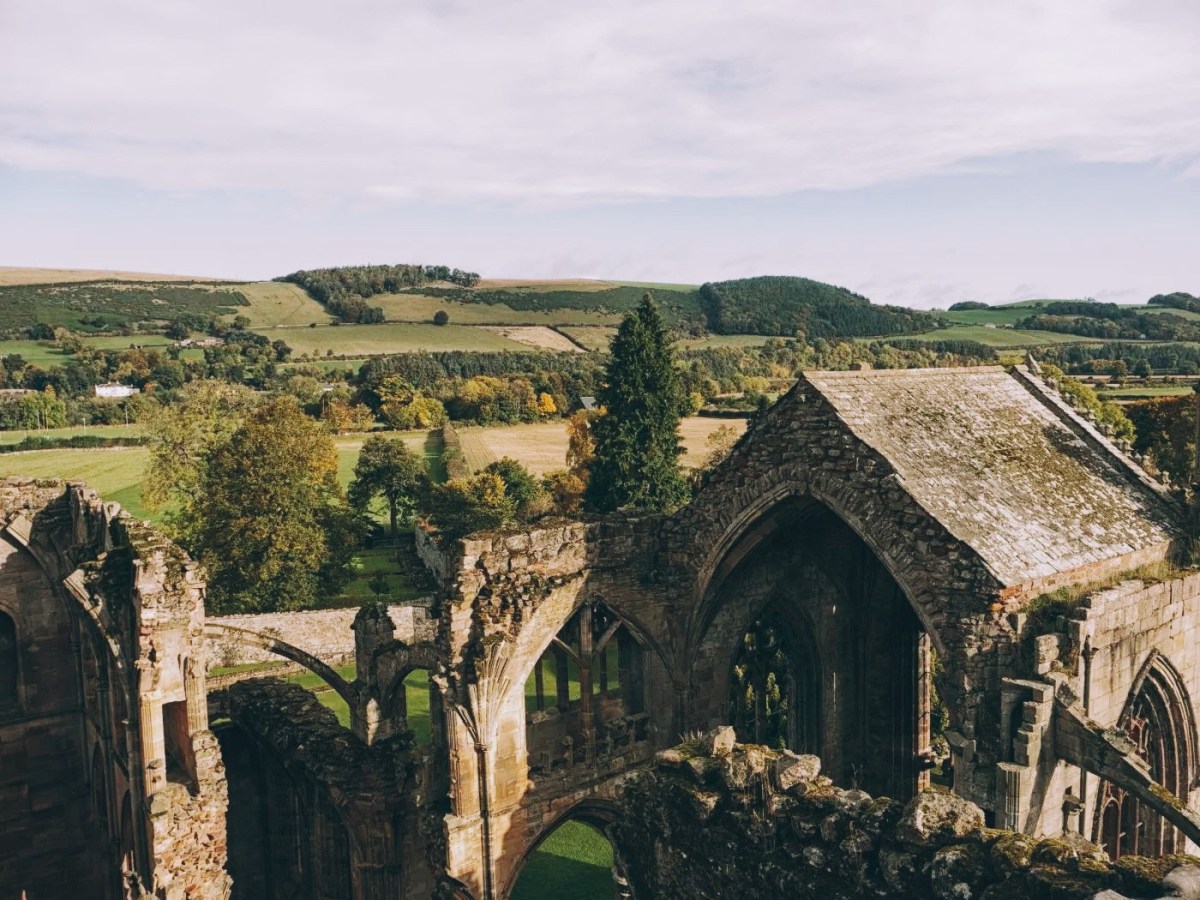We spent the last four nights of our Scotland trip in autumn last year in the Scottish Borders. Staying in a rustic cottage near the town of Selkirk, we were not only close to the main attractions, the Scottish Borders abbeys, but also to England. We had spent most of our trip driving around the north coast of Scotland. The Scottish Borders were definitely a nice change of sceneries and pace.
There were so many Scottish Borders attractions that I wanted to see. Unfortunately some of them were already closed for the season in mid-October. I really should have done a better job researching the Scottish Borders attractions before our visit. We seem to have missed a lot of amazing sights! Admittedly, we only had one full day to explore the region and most if not all attractions had shorter opening hours in October (if open at all). We did thoroughly enjoy the few that we managed to visit.
Smailholm Tower

We stumbled upon Smailholm Tower on our way back from a day trip to England. It was almost sunset when we got there. Even though the tower was already closed for the season, it was still attracting visitors. We weren’t the only ones there, even that late in the day. I could see why. It is a magnificent structure on a hilltop with a nice sweeping view of the surrounding area.
Smailholm Tower was built in the 15th or early 16th century. It was built to protect its occupants from the sporadic English raids. Sir Walter Scott used to spend time at the tower in his youth and later in his life, he brought the famous English painter, J.M.W. Turner with him to the tower. Turner’s sketch of the tower was included in Scott’s Poetical Works. Only later did we realize that Smailholm Tower was the building on the cover of the Lonely Planet Scotland Travel Guide that we had with us!
The Wallace Statue

After our visit to Smailholm Tower, we headed towards Scott’s View. That’s when we stumbled upon the parking area of the Wallace Statue. It was getting late and I was getting tired. We didn’t really know how far the statue was from the parking lot. I decided to stay in the car while my husband went to investigate the statue. He came back about 15 minutes later with some pictures of the statue for me. He thought it was cool.
The Wallace Statue was made of red sandstone by John Smith of Darnick and was erected in 1814. It stands 31 feet high and depicts Wallace looking over the River Tweed. Sir William Wallace was a Scottish knight who became one of the main leaders during the Wars of Scottish Independence, a hero.
Scott’s View

We arrived at Scott’s View just in time for the sunset. A couple other people also had the same idea as us. It was the perfect place to watch the sun go down at the end of a long day. The view over the valley was simply amazing, made even better by the warm, golden light brought by the sunset. We liked this spot so much we came back a couple of days later to appreciate the view in broad daylight.
Scott’s View is known to be one of the favourite views of Sir Walter Scott. According to a popular story, Sir Walter Scott stopped at this spot so often on the way to his home at Abbotsford, that his horses would stop without command. Sir Walter Scott sure knew a great spot when he saw one!
Melrose Abbey

We spent the last full day of the Scotland portion of our vacation exploring the famous abbeys of the Scottish Borders. Melrose Abbey was our first stop of the day. I was pretty excited about visiting this abbey as it seemed to be the most famous one of the bunch. I was ready to be wowed, and wowed I was. Amazing architecture, albeit in a ruined state! We climbed up a tower in the abbey through a narrow and steep staircase and was rewarded with a beautiful view of the surrounding area. I was freaking out on the way up and down but the view was worth it. 🙂
Melrose Abbey was founded in 1136 by Cistercian monks and was the first Cistercian abbey in Scotland. The abbey is known for its many carved decorative details, including likenesses of saints, dragons, gargoyles and plants. There’s even one of a bagpipe-playing pig! It’s famous for being the place where the Scottish King Robert the Bruce’s heart was buried (though it’s apparently never been proven to be true or untrue).
Dryburgh Abbey

Dryburgh Abbey was our next stop. I think out of the three abbeys we visited that day, this one was my favourite, but I’m not sure why. It just was. The abbey had a reading room with great acoustic (which is totally useless in a reading room, I suppose). I hummed a song in the room and my voice actually sounded better than it really was! 😀 It also had a lot of benches. I love benches! Maybe that was the reason I loved this abbey, but probably not. I don’t remember sitting on any of them. I guess I just liked its beautiful Gothic architecture.
Dryburgh Abbey was burned down so many times since its establishment in 1150, it’s not even funny. The last time it was burned down was in 1545. Not sure if there had been any attempts to restore it since. Anyway, this abbey is the final resting place of Sir Walter Scott. He was buried there after his death in 1829.
Jedburgh Abbey

I think Jedburgh Abbey was the most impressive one of the three abbeys we visited in the Scottish borders, in that it’s a large structure that’s still mostly intact. It was easy to imagine how magnificent it must have been in its glory days. And there were so many arches! Lots and lots of arches! There was a tower you could climb up to by a stairway for a bird’s eye view of the compound but I was tired and decided to give it a pass.
Founded in 1138 as a priory, Jedburgh Abbey has an interesting mix of Romanesque and Gothic architectures. It took 70 years to build, during which architecture style changed from Romanesque to Gothic. They had recreated a cloister garden with the same plants once used in the medieval abbey on one side of the building, which I found quite interesting. I wanted to explore more but, alas, it was closing time already.
Leaderfoot Viaduct

We came across the Leaderfoot Viaduct earlier in the day while driving from Dryburgh Abbey to Kelso (if I remember correctly). Opened in 1863 as a railway viaduct, it’s quite a young structure compared to the 900 years old abbeys we visited that day but it was still pretty impressive-looking.
There was a sign nearby pointing to the Roman settlement of Trimontium but we couldn’t really figure out where it was exactly. I think it might have been in the valley you could see from Scott’s View. We shall investigate when we get the chance to go back to Scotland. 🙂
Plan Your Trip
If you’re planning on visiting the Scottish Borders, you might want to consider getting the Scottish Borders Explorer Pass (£18.00 for one adult; £36.00 for 2 adults and up to 6 children). It covers entrance fee to some of the more popular Scottish Borders attractions, including all three abbeys plus Hermitage Castle and Smailholm Tower (the last two will already be closed for the season if you go in mid-October like we did, however). We rented our car from Alamo (the best deal we could find on automatic car rental) and booked our cottage in the Scottish Borders near Selkirk through Airbnb (sign up here for CA$50/US$40 credit to spend on your first stay).
We loved the Scottish Borders and wished we could have stayed longer. Next visit, we absolutely will! Seriously, the Scottish Borders are just as charming and beautiful as the Highlands but with much fewer tourists. If you like magnificent old ruins, fascinating history, and beautiful, bucolic landscapes, you should definitely add the Scottish Borders into your Scotland trip itinerary. You won’t regret it!

